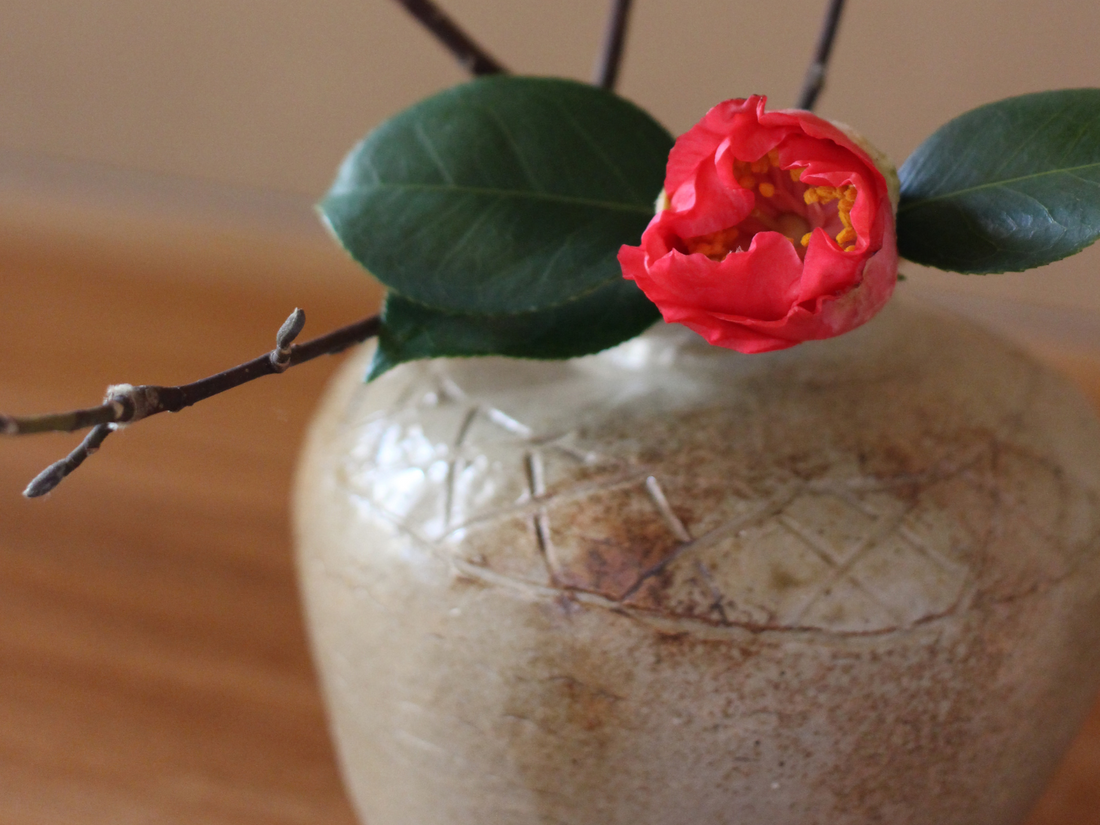
How To Make an Ikebana Arrangement with a Tsubo Vase
Ikebana, the art of Japanese flower arrangement, is not only a beautiful way to express creativity but also a mindful practice that brings harmony to the environment. A tsubo vase, with its wide and versatile design, is an easy to use vase for your ikebana arrangements. In this step-by-step guide, we will walk you through the process of creating a stunning ikebana arrangement using a tsubo vase. So, let’s delve into the world of ikebana and create something truly captivating!
Materials Needed:
- Tsubo vase
- A variety of fresh flowers and foliage
- Flower scissors or gardening secateurs
- Water
Step 1: Prepare the Workspace
Choose a clean and clutter-free area to work on your ikebana arrangement. Lay down a water-resistant mat or newspaper to catch any water spills or debris. Make sure you have all your materials within reach for easy access during the process.
Step 2: Select the Tsubo Vase
Choose a tsubo vase that suits your personal style and complements the flowers you intend to use. Tsubo vases come in various shapes, sizes, and colors, so pick one that resonates with your aesthetic preferences and the theme you wish to create. A Tsubo vase has a narrow opening and a wide body. They were traditionally used for storing food and other materials in them, rather than for flower arrangement.
A Tsubo vase is perfect for arranging with heavy materials because they are low and can hold a lot of water, which makes balancing strong materials easier. Because they have a narrow opening, you don’t need to use a kenzan. Instead, create stable structures with your branches within the opening to allow a supportive area to place your flowers. Once you’ve chosen your vase, fill it with clean water.
Step 3: Prepare the Flowers and Foliage
Trim the stems of your flowers and foliage using your scissors. In Ikebana, we always cut our flower stems under water before arranging. This allows for better water absorption as it stops any air bubbles coming into the stem. Remove any leaves that would fall below the waterline, as they can cause bacterial growth. Prepare a variety of flowers and foliage, selecting those that complement each other in terms of color, shape, and texture.
For the Tsubo style arrangements, it is common to see blossoms, pine or other large branches arranged in these heavy vases.
Step 4: Consider your design elements
Consider your materials and how you will be able to create your arrangement to show the three principles of line, mass and colour. Think about how you can create an asymmetrical design to complement the often round shape of the Tsubo vase.
Step 5: Begin the Arrangement
Start by placing your heaviest branches into the vase. You can split the stems of two main branches horizontally through the ends of their branches to scissor the two branches together in order to create a a firm and stable base inside the vase. Play with different angles and heights of your branches until you achieve the desired look. Once you are happy with the shape of your two main branches and they are secure and stable, move onto the lighter materials.
Step 6: Add Depth and Texture
To add depth and texture to your arrangement, incorporate flowers and foliage with varying shapes and sizes. Place taller stems towards the back and shorter ones towards the front, creating layers of visual interest. Make sure your flowers at the front are coming towards the viewer and over the front edge of the vase.
Step 8: Create Negative Space
Ikebana emphasizes the importance of negative space, which allows the flowers and foliage to breathe and interact with their surroundings. Leave empty spaces between the stems and avoid overcrowding the vase. Embrace the simplicity and minimalism of ikebana.
Step 9: Adjust and Refine
Step back and observe your arrangement from different angles. Make adjustments as needed, ensuring the overall balance and flow of the composition. Trim any excess stems or foliage that disrupt the desired shape.
To continue your flower arrangement journey and learn more about Ikebana, join our online Ikebana Study Group with members from around the world.

